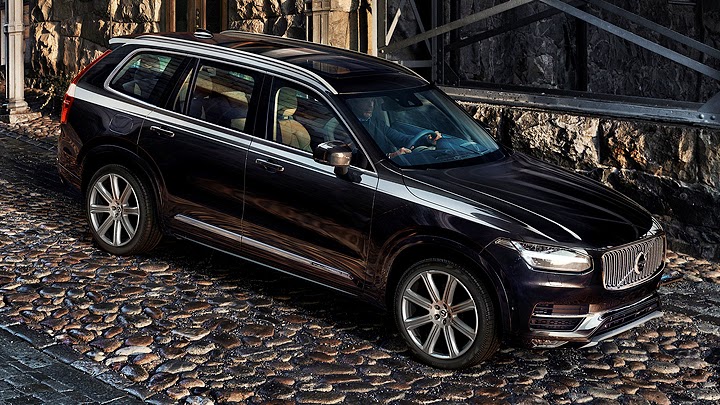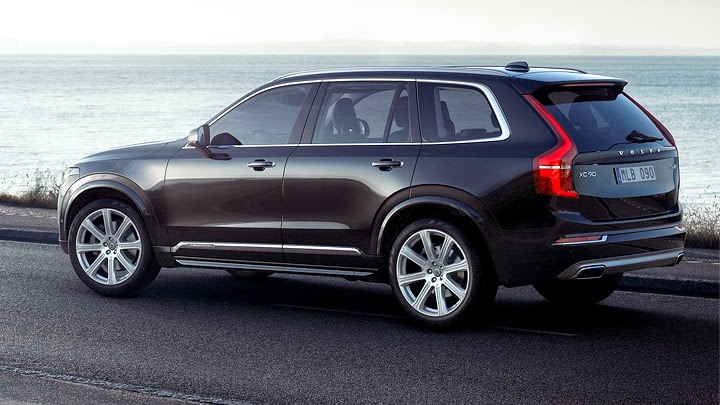
Even though Volvo started to rethink its concepts a little earlier, starting with the first-generation S60, the so-called Revolvolution would only reach its pinnacle with XC90. Investing in new, modern designs was the perfect phase to take a step as big as releasing an entirely new car. And since the early 2000s were just the beginning of the golden times for SUVs, the Swedish concoction could not have had a better start. It helped the automaker to strengthen itself in the luxury market again, since its rational, boxy-looking lineup was attracting each time less buyers. Therefore, if everything started to go that well, why would Volvo bother to risk it? XC90 sailed through these years getting improved as much as possible, rather than altered.
Having all that in mind, it gets pretty easy to understand why everyone was almost as excited as the very Volvo to see this article’s car out in the open. Now that it has finally happened, the truth is the result managed to be better than the most optimistic expectations, despite how big the very automaker made them with all those teasers. The overall feeling is that the predecessor appears only as a virtual resemblance – even the signature verticalized tail lights were reinvented. Leaving the déjà vu as subtle as that is great because, while still being connected with its roots, the new model is freed to form an image of its own, which includes a much more realistic possibility of attracting new types of customers. This is exactly what was Volvo has done.










The external dimensions have changed in the same way as pretty much every modern vehicle’s do: the new XC90 is lower, wider and longer. However, since its first generation arrived before the crossover frenzy and lived long enough to see those go from “revolutionary” to “mainstream”, Volvo preferred to please the enthusiasts and kept ignoring those. XC90 is an SUV even more than before, featuring a silhouette which looks as elegant as a Range Rover’s. From any angle you look, the biggest attraction is always a classy duo of lights and shades. Creases and chrome inserts are only minor details. Speaking of which, when you finish contemplating how imponent the hood became, go to the headlights: their T-shaped LED array is called “Thor’s Hammer”.
Such level of “modern-day sophistication” is repeated by the interior. There are several options of leather, which you can combine with metal inserts, broad wooden sections or both. The shift knob is literally made of crystal, crafted by the Swedish company Orrefors. Controls such as engine start/stop button and audio knob are diamond-cut. And if your purse strings are loose enough, you can also get a full-digital instrument cluster and a Bowers & Wilkins audio system with nineteen speakers and 1400 watts. Just as interesting is XC90’s infotainment system, whose touchscreen has vertical orientation. Its functions are divided between phone, information, navigation and audio, and it includes integration with both Apple CarPlay and Android Auto.










The flagship crossover also debuts Scalable Product Architecture, which stands for Volvo’s modular platform. It brought several electronic novelties, increased both the internal room (still dedicated to seven, with the second row being able to slide and recline) and the overall resistance, and also made it thinner. When it comes to safety, being a cutting-edge Volvo means the new XC90 has so many equipments that it is better to list only the “world-firsts”: the vehicle brakes itself if the driver tries to turn across oncoming traffic, and the front seats use energy-absorbing material to protect the occupants from vertical shocks. City Safety, which slows or stops the car so as to mitigate or avoid front collisions, was upgraded and comes as standard.
Following Volvo’s goal of dropping anything bigger, XC90 now uses only four-cylinder engines, all paired to an eight-speed automatic transmission. T6 became a both supercharged and turbocharged 2.0L, in order to ride just as quickly in both low and high engine speeds, and generates 316 hp and 295 lb-ft. Europeans will also have D5, which stands for diesel-burner 2.0L whose two turbos manage to reach 225 hp and 347 lb-ft. The crown jewel, however, is the plug-in hybrid T8: the aforementioned gasoline engine is paired to an 80-hp electric sibling and a 9.5-kWh battery. It delivers 400 hp and 472 lb-ft, and reaches up to 40 km in all-electric mode. T6 was the one which equipped the 1927-unit First Edition, which was sold out in only 47 hours.
Lançamento no Brasil (17/04/2015)
Meses depois da edição de lançamento mundial, o novo XC90 teve sua pré-venda iniciada no Brasil. A empresa já aceita pedidos em algumas revendas espalhadas em várias regiões, sempre com preços entre R$ 319 mil e R$ 363 mil. Por enquanto, as versões aceitas são Momentum (de entrada) e Inscription (de topo), sempre na configuração T6: ela usa um motor 2.0 turbo de 320 cv de potência e 40,8 kgfm de torque. Sua vasta lista de equipamentos inclui acabamento interno em couro com três tons, ar-condicionado de quatro zonas, teto solar panorâmico, e central de entretenimento com touchscreen vertical, sistema de áudio, conexão Bluetooth, navegação GPS, e sistema Apple CarPlay com comandos de voz.